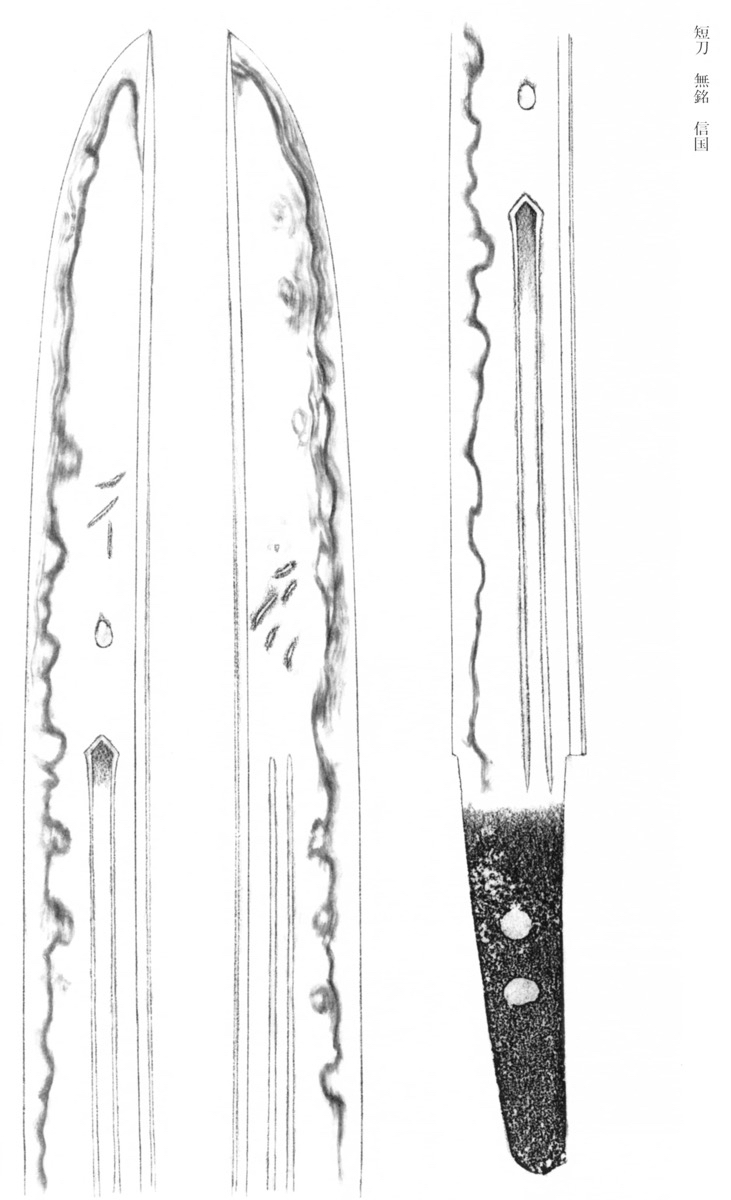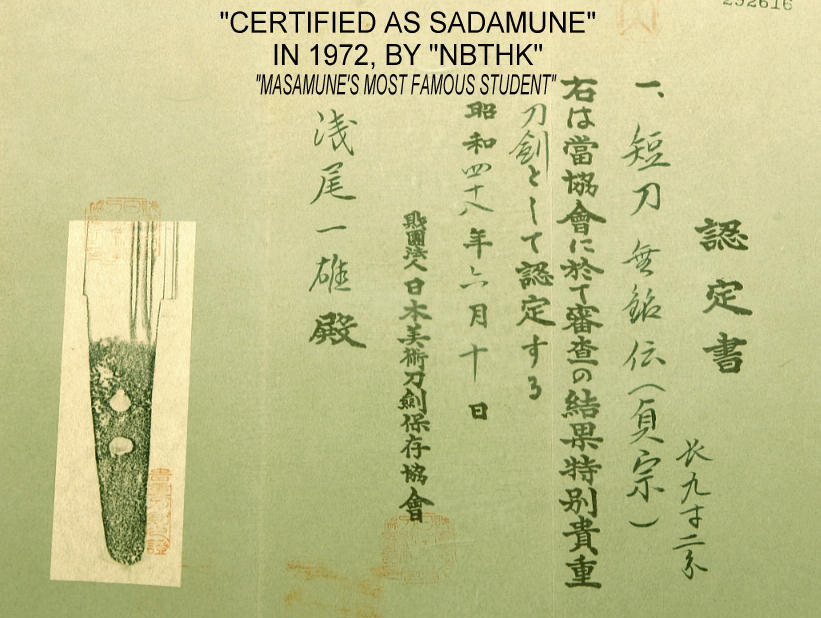Gallery Page (Display Only)
NOBUKUNI / SADAMUNE (MU-MEI)
EXCEEDINGLY RARE WITH 2 SETS OF PAPERS
APPROX 1.5 LBS OF SOLID GOLD
1st Generation (SHODAI)
Juyo token by the NBTHK
J?y?-t?ken at the 44th j?y? shinsa held on November 12, 1998
tant?, mumei: Nobukuni (??)
Hy?go Prefecture, Asao Kazuo (????)
Measurements
nagasa 27.8 cm, sori 0.2 cm, motohaba 2.55 cm, nakago-nagasa 9.4 cm, only a hint ofnakago-sori
Description
Keij?: hira-zukuri, mitsu-mune, wide mihaba, sunnobi, shallow sori
Kitae: itame that is mixed with mokume and towards the ha with some nagare and that features ji-nie and chikei
Hamon: nie-laden ko-notare-ch? that is mixed with gunome-midare, many sunagashi, kinsuji, yubashiri, and tobiyaki
B?shi: ko-maru-style kaeri with hakikake
Horimono: on the omote side a bonji, a lotus flower, and a suken, on the ura side a bonji and gomabashi,
Nakago: ubu, kurijiri, katte-sagari yasurime, two mekugi-ana, mumei
Explanation
The swordsmith Nobukuni (??) from Yamashiro province came from the lineage of Ry?kai (??) and one theory suggests that he was the grandson of Ry? Hisanobu (???). Traditionally, Nobukuni is also regarded as having been a student of S?sh? Sadamune (??). Works dated with the eras Enbun (??, 1356-1361), K?an (??, 1361-1362), and J?ji (??, 1362-1368) are attributed to the first generation, who was succeeded by a second generation at the end of the Nanbokuch? period. At the beginning of the Muromachi period, Nobukuni smiths with names like Saemon no J? (????) and Shikibu no J? (???) were active and these smiths are summarized under the umbrella term ?ei-Nobukuni (????). Each generation focused on a hardening in notareba and suguha, whereas from the end of the Nanbokuch? period and ?ei onwards, the traditional repertoire of the Nobukuni School was enlarged by interpretations in gunome-ch? and midareba.
This tant? has an ubu-nakago and is mumei and has the typical shape of the Nanbokuch?-period Enbun and J?ji eras. The prominently nie-laden jiba follows the typical style of Nobukuni and skillfully engraved horimono on both sides as seen here were the forte of this school as well. Therefore, this blade reflects the characteristic features of the first generation Nobukuni and is of an excellent deki.
This Sword is not available for purchase.
If you wish to purchase a Japanese Sword, please view our Nihonto for sale page or contact us directly via email or by telephone at 1(608) 315-0083 any time. Please include specifics of what you seek, i.e.: Katana, maker, era, price range, etc.
Pictures and content may not be copied without the express permission of samuraisword.com ©











